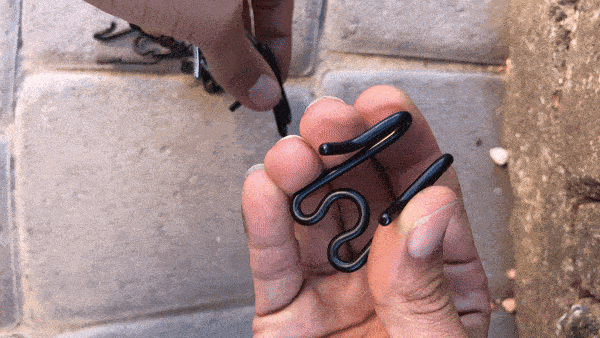
Prong Collars
June 5, 2019
Prong collars
are a professional dog training tool most commonly used with medium, large, and giant breed dogs.The use of prong collars can be a divisive topic among dog owners, and at first glance, it's easy to see why. Prong collars look like something out of a medieval torture chamber — but as with any tool, their appearance serves an important function.
What is a Prong Collar?
A prong collar is a training collar made of removable links which form a series of blunt metal contact points against your dogs skin. The prongs, (or “links”), have a pinch-action when pulled, thus the nickname “pinch” collar. They are designed to help evenly distribute pressure around your dogs neck when the leash is pulled.
Prong collars apply a physical correction to your dogs neck. Meaning they can hurt your dog if used incorrectly, or if they're left on for extended periods of time. Unlike flat collars, a prong collar should not be worn everyday, and should never be worn for more than a few hours straight.
Prong collars come in both wide and narrow links. Although thinner collars may seem gentler, the rule among training collars is the thinner the collar (the closer the points of contact) the harsher the correction. The larger the links, the more evenly distributed the pressure, the milder the overall effect. This is because when the links are thin and close together, the pinch-action of the collar can happen with much less force, so even a very slight correction from the leash could be very intense for your dog.
Prong collars should only be used on adult dogs.

Prong collars should be worn snug and high on your dogs neck.
Amazon.comHow Should You Fit a Prong Collar On a Dog?
Prong collars should be worn snugly under your dogs jaw, with only a little bit of slack.
Many people make the mistake of fitting their prong collar incorrectly — unknowingly creating a very dangerous situation for their dog. Professional dog trainers always size a prong collar before putting it on a dog, because unlike martingale or fur saver collars, which can be several sizes too big and still be fairly effective, prong collars must fit correctly to be safe.
1. First, Remove the Extra Links
If you didn't know the links were removable in the first place — you're not alone!
Many dog owners are confused when they go to the pet store and can't find the right collar for their dog, because they all seem way too big! Most collars come with extra links. To remove (or add) links, simply pinch the narrower part of the link with your fingers and pull.

Links on prong collars slide into eachother.

If you intend to use a prong collar regularly, you should invest in a quality collar that is easy to take on and off. Some collars come with quick release straps, different materials, and different designs, all which produce different effects.
Remove enough links so that the collar fits snugly on your dogs neck. You should be able to fit 2 fingers between the collar and your dogs skin, but the collar shouldn't move around much on your dogs neck.
2. Place the Collar on Your Dog
In some dog breeds, like Doberman Pinscher's, Greyhounds, and Great Danes, it can be difficult to keep a prong collar in place. This is also true of overweight dogs, or dogs without a lot of muscle tone around their neck. It's OK if your collar moves around a little, but it should *never *be so loose that it can hang down your dogs neck.
Taking the collar off your dog is done the same way is putting it on. Simply pinch one of the links and pull. It's a good idea to teach your dog to sit still when you're adjusting his collar.
If you feel that you dog is better off wearing a prong collar loose to lessen its effects, you should consider a fur saver collar - or, clip your leash through both rings on your collar to stop the pinch-action.
3. Connect the Leash
Most pinch collars come with 2 rings.
Using only 1 ring on the collar is the normal way to use the collar, and means the collar is "live." In other words: when you pull the leash, the collar will tighten. This is important to understand, because it means anytime you put pressure on the leash, even a little, you are correcting your dog.
By contrast, if you attach the leash to both rings at the same time, you stop the collar from constricting. Although the prongs will still be facing your dogs skin, therefor never truly stopping the correction, clipping the leash to both rings can make the effect much milder.
Using A Prong Collar
Whether or not you use a prong collar with your dog is up to you, but there is no substitute for exercising, training, and practicing with your dog. Like us, dogs are creatures of habit, and they do better when they're taught better. People usually use prong collars (in conjunction with positive training, voice commands and regular practice) to stop or diminish problem behaviors, such as:
- Leash pulling
- Lunging at people/dogs/cyclists/horses on a walk
- Refining an already-trained dog's obedience
- Redirecting a distracted dogs attention
There are no magic cures in dog training. Everything takes practice and time. While prong collars can be a helpful tool in diminishing your dogs desire to do certain behaviors, you must also reinforce his good behavior and be willing to find creative ways to manage and change your dogs behavior over time.







